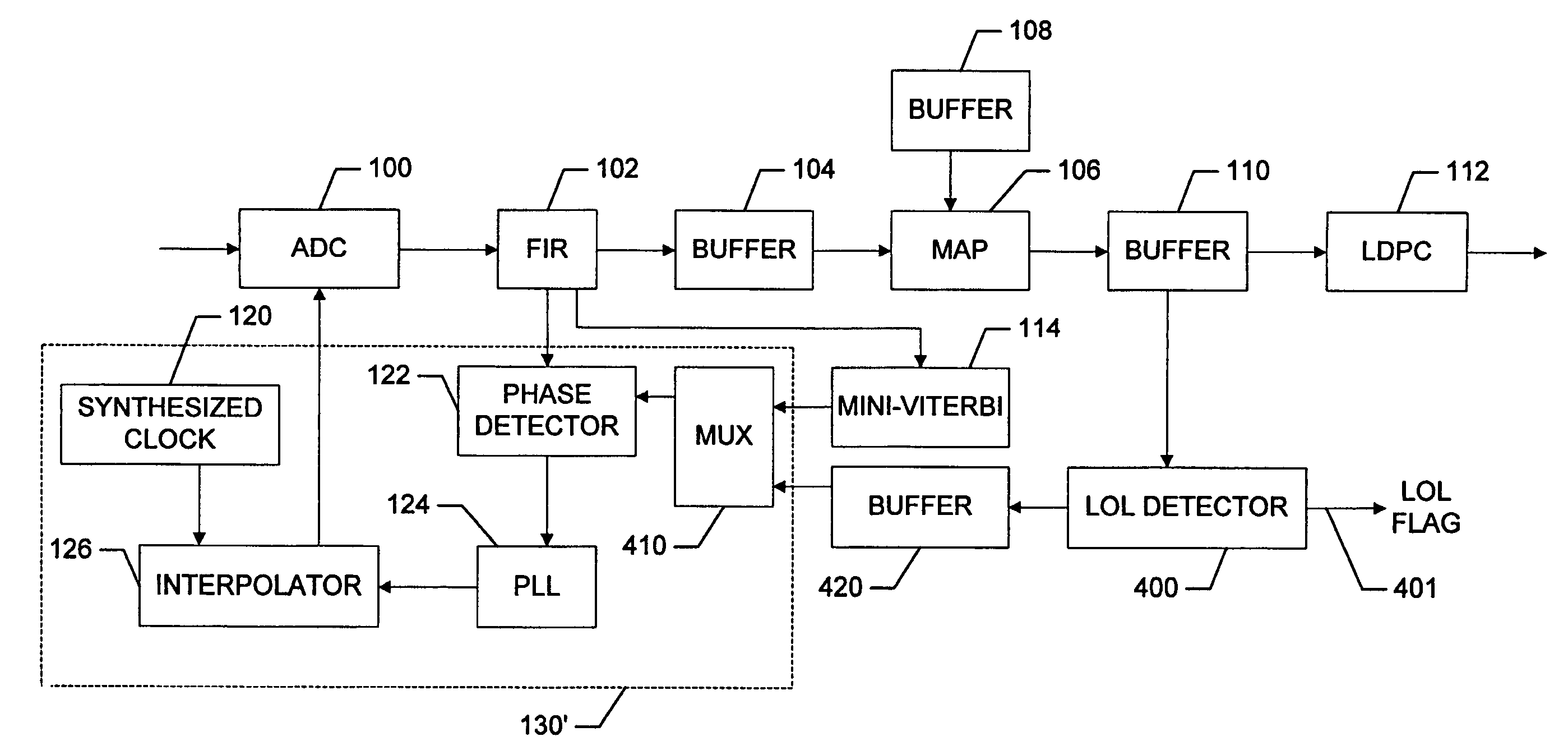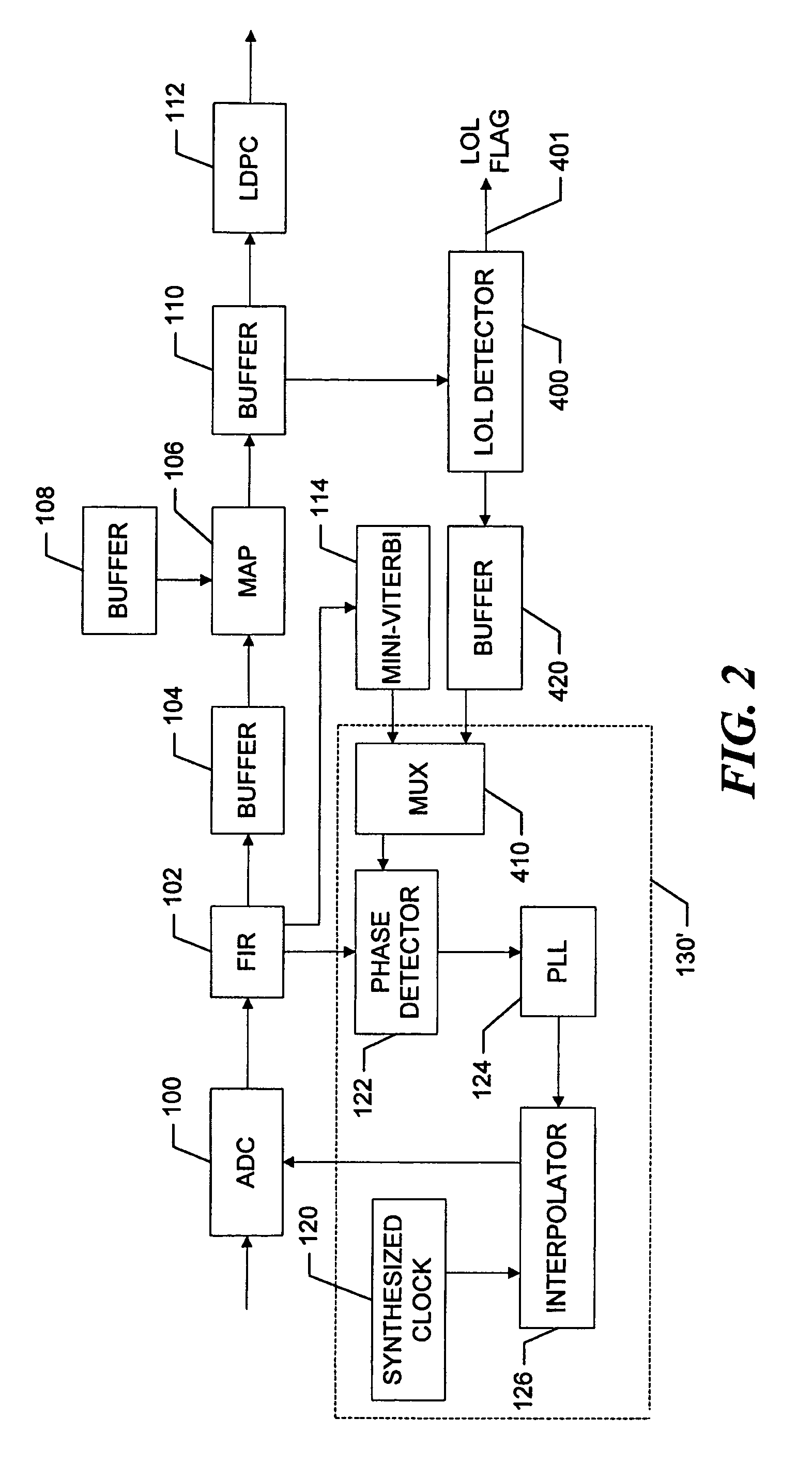Timing recovery in error recovery for iterative detection
a technology of error recovery and iterative detection, applied in the field of decoding systems, can solve the problems of particularly unreliable associated bit values produced by iterative detectors, and achieve the effects of reducing raw bit error rate, improving signal accuracy, and fast decoding
- Summary
- Abstract
- Description
- Claims
- Application Information
AI Technical Summary
Benefits of technology
Problems solved by technology
Method used
Image
Examples
Embodiment Construction
[0019]Referring now to FIG. 1, an analog read signal associated with reading a sector of a hard drive (not shown) is supplied to an analog-to-digital converter (ADC) 100. The ADC, which may be a flash ADC, operates in a known manner to sample the analog data signal and convert the samples to digital values. The ADC takes samples of the analog signal at times directed by a clock signal that is produced by a timing sub-system 130. The timing sub-system is described in more detail below.
[0020]The digitized samples produced by the ADC 10 are supplied to a finite impulse response filter (FIR) 102, which essentially shapes the samples for more reliable bit detection. The filtered data signal is supplied through a buffer 104 to a maximum a posteriori (MAP) detector 106. The MAP detector operates in a known manner to assign estimated bit values to the samples. The MAP detector produces input symbols, which consist of a bit value, or sign, and associated confidence information, and supplies ...
PUM
 Login to View More
Login to View More Abstract
Description
Claims
Application Information
 Login to View More
Login to View More - R&D
- Intellectual Property
- Life Sciences
- Materials
- Tech Scout
- Unparalleled Data Quality
- Higher Quality Content
- 60% Fewer Hallucinations
Browse by: Latest US Patents, China's latest patents, Technical Efficacy Thesaurus, Application Domain, Technology Topic, Popular Technical Reports.
© 2025 PatSnap. All rights reserved.Legal|Privacy policy|Modern Slavery Act Transparency Statement|Sitemap|About US| Contact US: help@patsnap.com



